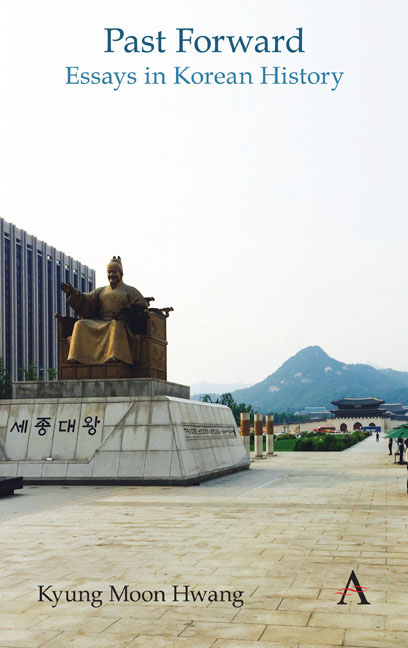Book contents
- Frontmatter
- Contents
- List of Figures
- Foreword
- Chronologies of Korean History
- Themes
- Acknowledgments
- Note on Romanization and Spelling
- Part I Circulating History
- Part II Durable Traditions
- Part III Ancient Remains
- Part IV Dynastic Depths
- Part V Modern Origins
- Part VI Challenges of Nationhood
- Part VII History Makers
- Part VIII External Presences
- Part IX Trials of Modernization
- 62 Summer Symmetries
- 63 The Korean War as a Turning Point
- 64 The Students of April
- 65 The Four Ds of South Korean History
- 66 Two Assassinations
- 67 Roads to Revolution
- 68 Dramatizations of the Gwangju Uprising
- 69 The Great Labor Uprising of 1987
- Part X Gripped by the Past
- Index
64 - The Students of April
from Part IX - Trials of Modernization
- Frontmatter
- Contents
- List of Figures
- Foreword
- Chronologies of Korean History
- Themes
- Acknowledgments
- Note on Romanization and Spelling
- Part I Circulating History
- Part II Durable Traditions
- Part III Ancient Remains
- Part IV Dynastic Depths
- Part V Modern Origins
- Part VI Challenges of Nationhood
- Part VII History Makers
- Part VIII External Presences
- Part IX Trials of Modernization
- 62 Summer Symmetries
- 63 The Korean War as a Turning Point
- 64 The Students of April
- 65 The Four Ds of South Korean History
- 66 Two Assassinations
- 67 Roads to Revolution
- 68 Dramatizations of the Gwangju Uprising
- 69 The Great Labor Uprising of 1987
- Part X Gripped by the Past
- Index
Summary
“April is the cruelest month,” wrote T.S. Eliot to begin his epic poem, “The Wasteland.” He referred to the often agonizing mixture of “memory and desire” that accompanies the onset of spring, when hopes for a nourishing new beginning—“April showers bring May flowers”—are tempered by experiences of pain and disappointment.
For observers of modern Korean history, these perceptions of both the promise and peril of April often bring to mind the revolution of April 19, 1960, or “Sa-il-gu,” when students led mass protests against the corrupt South Korean government of President Syngman Rhee. The demonstrations led to scores of deaths and injuries among the protesters but eventually toppled the regime.
This momentous event also leads us to contemplate the broader role that students have played in South Korea's past. In doing so, we find compelling connections between that fateful moment in spring 1960 to other major events, particularly in the epic of democratization, a story marked by shortterm suffering for the sake of long-term gain. The students who led the April 1960 demonstrations came from what can be called “the Korean War generation”: They were born at the end of the Japanese colonial period in the throes of wartime mobilization, the deprivations of which many of them likely remembered.
In fact, some may have even attended school before the liberation in 1945, although school had been out of reach for most Koreans at the time. Their childhoods were marked by the dislocations of the subsequent postliberation period, which led directly to the Korean War. Their adolescence came amid the devastation and calamities of the Korean War, and then was seared by the challenges of reconstruction in the 1950s.
Not all was bleak, however, for the 1950s also molded the students into the first generation to become educated en masse through public schooling and, just as importantly, through the widespread use of the Korean alphabet. The world of knowledge opened up to them, and they gained an awareness of the connections between their experiences and the larger issues of the day.
- Type
- Chapter
- Information
- Past ForwardEssays in Korean History, pp. 185 - 187Publisher: Anthem PressPrint publication year: 2019



